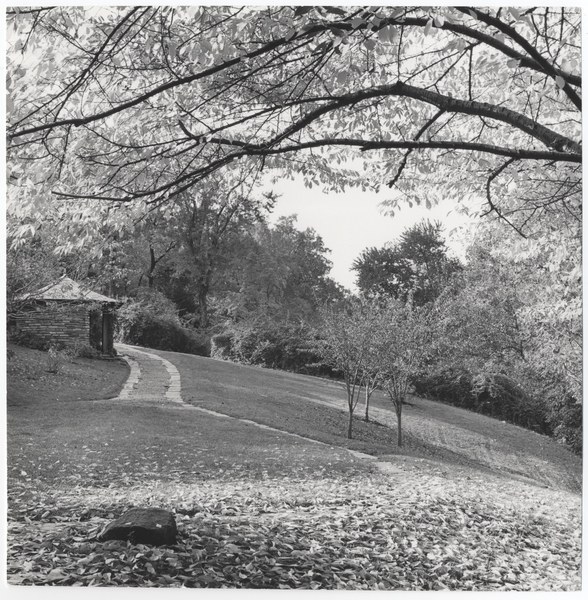The Catalogue House is an octagonal stone building with three open walls and a slate-shingled roof. The roof is topped with two lead squirrels. Located on the hillside immediately north of the Ellipse, the Catalogue House was built in 1935, and from 1940 to the present has housed educational displays about the garden.
Robert and Mildred Bliss dedicated the building to their close friends, Vernon and Charlotte Kellogg. The Blisses and Kelloggs worked together on relief efforts during the First World War. Vernon Kellogg, a professor of entomology at Stanford University, served as director of the Commission for Relief in Belgium in 1915–16. His wife, Charlotte Kellogg, worked alongside him. She penned the lines of poetry that are inscribed along the Catalogue House’s interior cornice: “Feathers in a row, measured left to right—how shall you chart the morning, how track the heels of night?” Charlotte Kellogg also authored Women of Belgium: Turning Tragedy to Triumph in 1917.
The Catalogue House began to fulfill its educational purpose in 1940, when Harvard University opened the gardens to guided tours. Anne Sweeney, Garden Guide, took her instructions from Beatrix Farrand. Together, the two women planned exhibits for the Catalogue House that featured illustrations of plants seasonally blooming in the gardens. Sweeney designed and placed the exhibits, under Farrand’s supervision, and she incorporated them into her guided tours of the grounds. She especially focused on using the Catalogue House to educate school children.
After the Garden Guide tours were discontinued in the late 1940s, the Catalogue House became a self-guided exhibit space. Recent exhibits have featured reprints of plates from the Rare Book collection, historic photographs, and a copy of Ernest Clegg’s 1935 aerial watercolor of Dumbarton Oaks.

